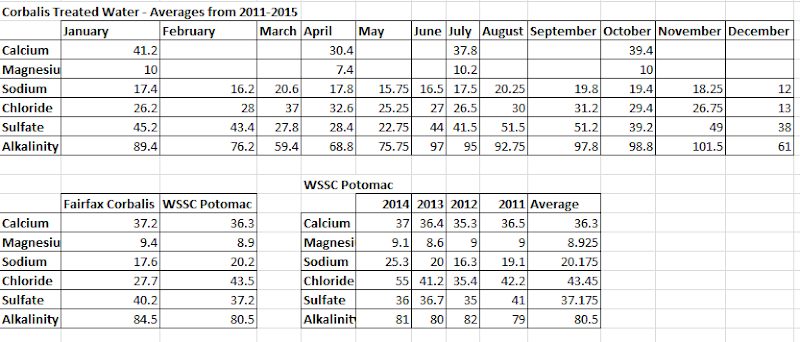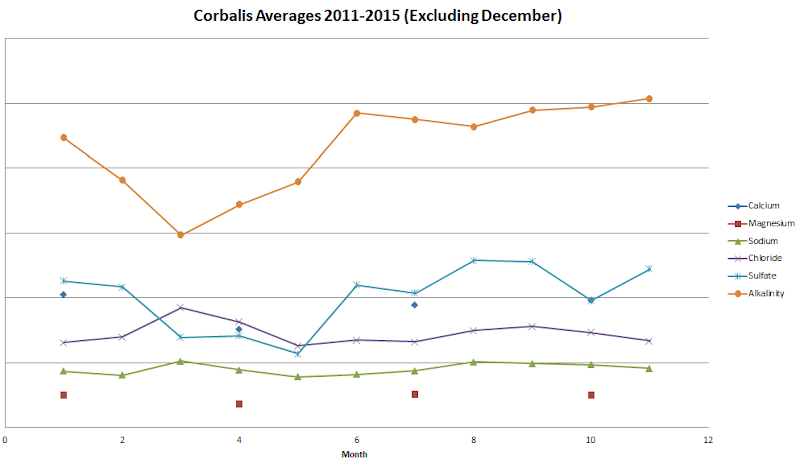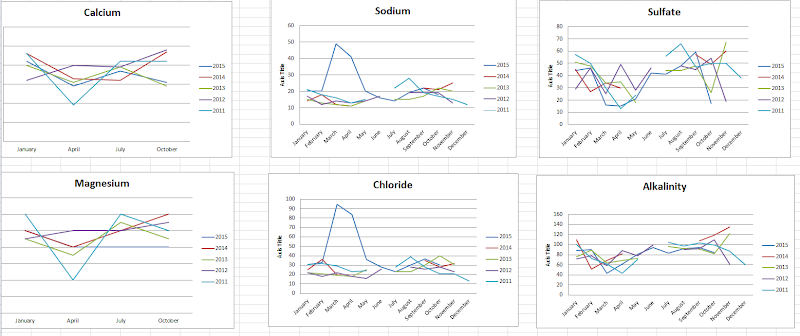So I was trying to look at the Water Analysis reports put out by the water companies and see if I could notice any useful trends. Looking for any thoughts on whether these monthly averages could be a good rule of thumb vs the yearly or multiple year averages. (See spreadsheet link) OR is this too dependent on other factors that looking at values at certain times of year is not useful?
I get my water from WSSC potomac source, however, they only produce a yearly report with averages so I pulled that data from the Fairfax Corbalis plant which is monthly. I believe this plant is getting roughly the same source Potomac river water. I then loaded all the data into a spreadsheet and made a few line charts. Looking at the data it seems like around March the water is the softest and it then works its way up to the highest point around November.
Here are the averages for the different values for each plant by year over the past few years:
Image of averages:

Chart of Corbalis Averages 2011-2015:

Individual values 2011-2015

Anyways, I know there are quite a few people in the area and water questions pop up a lot. Hopefully this info can help and narrow down source water (by month) to use with predicting our water.
I get my water from WSSC potomac source, however, they only produce a yearly report with averages so I pulled that data from the Fairfax Corbalis plant which is monthly. I believe this plant is getting roughly the same source Potomac river water. I then loaded all the data into a spreadsheet and made a few line charts. Looking at the data it seems like around March the water is the softest and it then works its way up to the highest point around November.
Here are the averages for the different values for each plant by year over the past few years:
Image of averages:

Chart of Corbalis Averages 2011-2015:

Individual values 2011-2015

Anyways, I know there are quite a few people in the area and water questions pop up a lot. Hopefully this info can help and narrow down source water (by month) to use with predicting our water.









![Craft A Brew - Safale S-04 Dry Yeast - Fermentis - English Ale Dry Yeast - For English and American Ales and Hard Apple Ciders - Ingredients for Home Brewing - Beer Making Supplies - [1 Pack]](https://m.media-amazon.com/images/I/41fVGNh6JfL._SL500_.jpg)














































